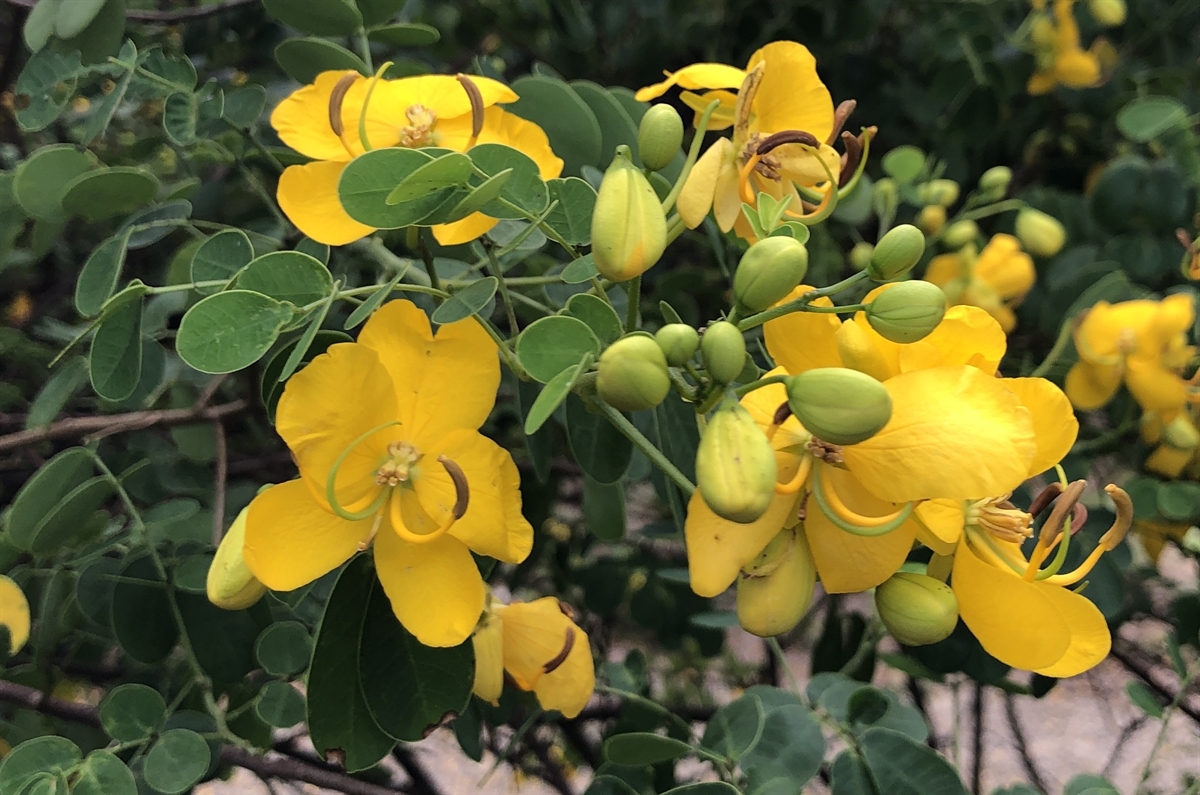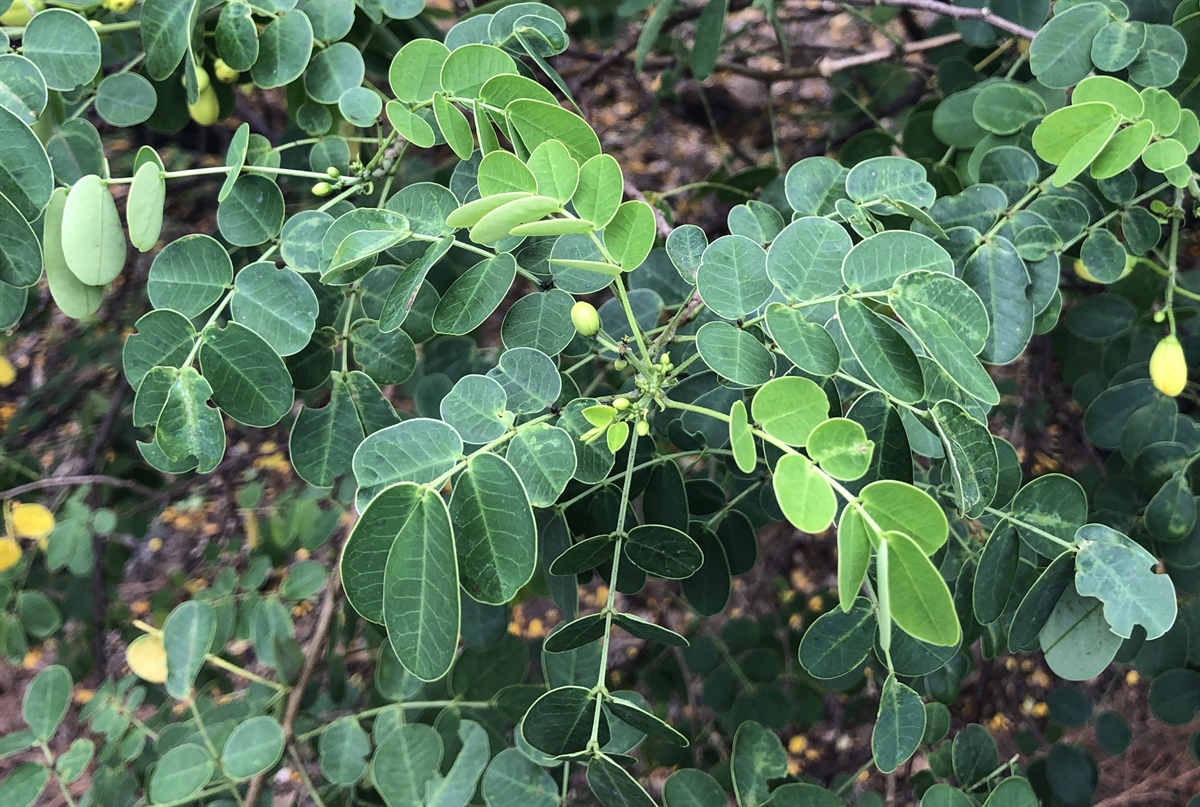Habit: Senna bicapsularis grows as a medium (climbing/slightly viny) shrub up to 3 m in height. The bipinnately compound leaves are arranged alternately. The petioles have a distinct round to slightly pointed, gland between the lower pinnae. The leaflets are in 3 or 4 pairs. Each leaflet to 3 cm in length, obovate, with a round leaf apex, with an entire margin.
The complete, perfect, zygomorphic flowers are arranged in racemes with up to 10 flowers. The calyx has 5, greenish, unfused, oblong sepals. The corolla has 5, yellow, unfused petals, none of which form a keel. There are 7 stamens of which only 2 are fertile. The ovary is superior and forms an elongate, round, many-seeded legume at maturity.
Habitat: Senna bicapsularis grows in Human Altered environments (yards and gardens) in and around abandoned fields/houses and roadsides.
Distribution: Senna bicapsularis is a doubtful native to the Lucayan Archipelago but does occur on many of the groupings. It does naturally occur in the greater Caribbean region, Central and South America. It now grows as a non-native in tropical and subtropical regions of the world.
Medicinal/Cultural/Economic usage: Senna bicapsularis is not known to be used in the Lucayan Archipelago. It is grown as an ornamental.

